Vietnam Travel Information, Tips and More
Country Information
Located on the eastern part of the Indochinese peninsula, Vietnam is shaped like the letter “S”. China borders it to the north, Laos and Cambodia to the west, the East Sea to the east and the Pacific Ocean to the east and south.
With over 4,000-years of history, Vietnam has many valuable architectural monuments and there are more than 3,000 relics and landscapes classified national heritage. In addition there are over tens of millions of valuable antiques and national treasures being preserved and on display all over the country.
With over 4,000-years of history, Vietnam has many valuable architectural monuments and there are more than 3,000 relics and landscapes classified national heritage. In addition there are over tens of millions of valuable antiques and national treasures being preserved and on display all over the country.
The photo opportunities are endless as we travel past landscape dotted with rice paddies and water buffalo. Bicycles, mopeds and motorcycles fill the wide city avenues, which make crossing an experience. Expect to find bargains everywhere and anticipate tasting a new and unique cuisine. See daily rituals and traditions performed for hundreds of years.
Passport and Visas:
All travelers need a visa to visit Vietnam except citizens of certain Asian and Nordic countries.
You can get the visa by visiting a Vietnam Embassy and processing time is about 1 week. The easiest way to get your visa is the On Arrival / E-visa. You will need to fill out an "Online Application Form", pay a service fee and you should get your "Visa approval letter" within 2 working days, by either email or fax. Copies of the same document will be forwarded on your behalf to Vietnam Immigration checkpoints at the International Airports.
You can google Vietnam Visas or here are a few links - http://www.myvietnamvisa.com/ or http://www.getvisavietnam.com/ to get you started.
Take that letter along with at least 2 photos of standard passport size with you to either the Hanoi airport or Ho Chi Minh airport upon arrival. When you arrive in Vietnam, the Immigration officers will have those documents. The entire procedure should take about 15 minutes.
Vietnamese visa-on-arrival fee includes both the approval letter fee and stamping fee at Vietnam airport. As of 2016, the stamping fee is $25 for single entry visa (both 1 month and 3 month type) and $50 for multiple entry visa (both 1 month and 3 month type). Price is in US dollars and may change with advanced notice.
Weather
Vietnam has 3 regions, the North, Center and South and each region has distinct climates.
* The north is hot and extremely humid and receives heavy rain from June – August. Winter is from November until March and is cool and damp.
* The center is warm throughout the year and the rainy season occurs from August or September until December. The center often receives storms during October and November.
* The south has 2 seasons, one dry and the other wet. The wet season last from June until October, but the summer storms rarely last more than a few hours.
Time
Vietnam Standard Time is 7 hours ahead of Greenwich Mean Time and 12 hours ahead of EST / 15 hours ahead of PST
Currency
The official currency is the Vietnam dong (d), but the US dollar is pretty widely accepted. In tourist centers, most hotels will accept either, while other businesses may prefer dong.
1 USD = 22,675.74 VND or 0.000044 VND = 1 USD
Paper notes include: VND 500,000; 200,000; 100,000; 50,000; 20,000; 10,000; 5,000; 2,000; 1,000 and 500.
Coins include VND 5,000; 2,000; 1,000; 500 and 200, but they are no longer used.
It’s a good idea to check that any big dollar bills you plan on exchanging do not have any small tears or look too tatty, as no-one will accept them in Vietnam.
Many travellers are concerned by the safety of their money when travelling, and travellers cheques are popular for those who do not like carrying around cash or cards. Sadly, it can be quite difficult to cash travellers cheques in Vietnam and many major hotels will only exchange currency for current residents.
You’ll find several ATMs at Vietnam’s major airports. They’re also plentiful around city streets and next to convenience stores, bars and restaurants. Vietcombank has the most ATMs in Vietnam. A number of international banks also have ATMs across the country. These include ANZ, Citibank and HSBC. ATMs in Vietnam use six-digit PINs. If your PIN is four digits long, you can usually get around this by adding two zeros in front. However, it’s best to ask your bank about this. Also, it is a good idea to let your bank know when you’ll be in Vietnam, so they won’t flag your transactions as suspicious and freeze your card.
Electric Plugs
Most plugs in Vietnam are still the two-prong electric plug variety, so you will need to use a plug adapter to adapt three-prong electronics to two-prongs. The more modern hotels may use the British style three-prong plugs.
Tipping
Tipping is not part of the culture in Vietnam, and you are not required to tip anywhere. There will be a service charge for more upscale restaurants. People more accustomed to receiving tips are tour guides and in Western style hotels.
On a private tours, tip your tour guide around 3-5 dollars per day per traveller. Also, be sure to tip your driver as well. One to two dollars should be sufficient. Also, you can buy small gifts for your tour guide or driver in lieu of tipping.
Cuisine
Because Vietnam is a typical wet rice country, rice is strongly worshipped here. Visitors to Vietnam will be amazed with the number of dishes made from rice: steamed rice (com) in daily meals, glutinous rice cake (square cake or banh chung), rice noodle, rice vermicelli, steamed rice pancakes (banh cuon) and many other ones. A common fish sauce bowl is also a a staple at most meals.. Even though steamed rice, fish sauce, pho and square cakes are symbolic dishes of Vietnam, each city, province, district, commune and village has its own unique special dishes.
Vat Refund
VAT refund for purchases by foreigners when leaving Viet Nam has been officially implemented in 9 international border gates, including Noi Bai International Airport (Ha Noi), Da Nang International Airport (Da Nang City), Cam Ranh International Airport (Khanh Hoa Province), Phu Quoc International Airport (Kien Giang Province), Tan Son Nhat International Airport (Ho Chi Minh City), Da Nang International Seaport (Da Nang City), Nha Trang International Seaport (Khanh Hoa Province), Khanh Hoi International Seaport (Ho Chi Minh City), Ben Dam Con Dao Seaport (Ba Ria - Vung Tau Province).
When purchasing goods in stores with VAT refund, you must present a valid passport (original) to receive an invoice and the VAT refund declaration form
Before doing the procedures to check in luggage, visitors must present passport, invoice cum VAT refund declaration form (originals) and VAT refunded goods to customs authority at goods checking counters, so that customs official stamps “Checked”;
At the VAT refund counters in the restricted areas of the airport, you need to present your passport (original), boarding pass, invoice with the VAT refund declaration form stamped “Checked”.
VAT refund amount will be 85% of the VAT amount noted in the invoice and VAT refund declaration form;
VAT refund currency: VND; then exchange the VND to your preferred currency at the VAT refund counters according to the current exchange rate.
Wifi
Believe it or not, it is a lot easier to find a free wireless network hotspots in Hanoi or Ho Chi Minh City than major cities in North America. In Vietnam, visitors can get free access to the Internet at most coffee shops, Fast food franchises, hotels and office buildings.
Water
Do not drink from the taps. Always use bottled water. Ice in most restaurant is made with clean water and is safe.
Traffic Safety
Vietnamese drivers think the white lines in the road are for decoration. Pedestrians are reasonably safe but do be aware that motorbikes will mount the pavement should traffic be dense, and frequently travel the wrong way down a street, driving on both the left and right sides of the road, so please make sure you are looking around you as you walk the streets and before you cross the road.
Etiquette
When visiting Buddhist pagodas, dress conservatively and remove shoes before entering. It’s also considered impolite to have your back facing Buddha statues. Donations for the upkeep of temples are welcomed but not expected. Always ask for permission before photographing people or places of worship.
Water Puppet Show
Water puppetry is a tradition that dates back as far as the 11th century when it originated in the villages of the Red River Delta area of northern Vietnam. Today's Vietnamese water puppetry is a unique variation on the ancient Asian puppet tradition. The puppets are made out of wood and then lacquered. The shows are performed in a waist-deep pool. A large bamboo rod supports the puppet under the water and is used by the puppeteers, who are normally hidden behind a screen, to control them. Thus the puppets appear to be moving over the water. When the rice fields would flood, the villagers would entertain each other using this form of puppet play.
Shopping
Shopping is one of the best ways to immerse yourself in the local culture during your time in Vietnam holiday. Here you can find unique handicrafts, food items, and apparel at relatively affordable prices. Whenever shopping at local markets, art galleries, and craft centres, it’s wise to take your time searching for good Vietnamese souvenirs and gifts. Bargaining (at least 75% lower than the retail price) is a must for better deals as vendors often charge higher for tourists. Locally produced coffee, conical hats and dipping sauces can be found in most markets, but if you’re looking to purchase authentic Vietnamese silk, jewellery and antiques, make sure you’ve done your research and shop in a reputable store.
Vietnamese coffee beans can be found just about anywhere in Vietnam, from local markets and quaint cafes to shopping malls and international airports. Hanoi is the place for coffee, where you can get a 2.2 pound bag of whole or ground Robusta beans for about $4 USD.
Vietnam is a producer of Akoya cultured pearls. Many farms are located in region around the Halong Bay in northern Vietnam. Akoya cultured pearl encountered at a pearl farm in the Halong Bay, Vietnam. Saigon Pearls widely known as the best place in Vietnam for authentic pearls and jewellery.
Silk in Vietnam is made from the cocoons of silkworms using manual looms, and comes in a variety of patterns and colors. You can find plenty of fashion boutiques and souvenir shops selling shirts, ties, accessories, and dresses at relatively affordable prices. Unfortunately, counterfeit goods are very common in Vietnam, so if the price is too good beware.
Purchasing a conical hat may seem silly, but it’s one of the most practical items for travelling, especially during Asia’s downpours and hot summers. Also known as non la, these hats have been around since the 18th century and are typically handwoven using bamboo, palm leaves, and the bark of Moc trees.
Lacquerware is a traditional form of craftsmanship commonly used on furniture, dishes, bowls, vases and paintings, which takes up to four months to produce.
Hand embroidery in Vietnam often depicts natural scenes and wildlife. If you have time you can have you can create your own design.
Snake wine is very popular in Vietnam, and is produced by infusing whole snakes (mostly venomous ones) in a glass jar of rice wine. A popular souvenir, you can find one sold at most markets and touristy shops for about USD25. Locals believe that drinking snake wine helps increase one’s virility and alleviate rheumatism, though those claims have yet to be verified by professionals.
Don’t Leave Home without your Passport!



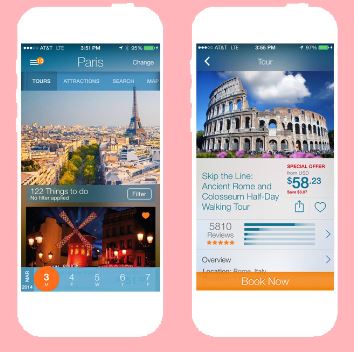


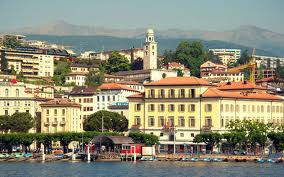
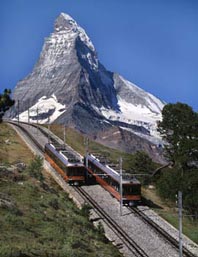
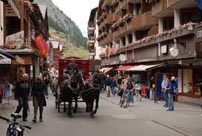

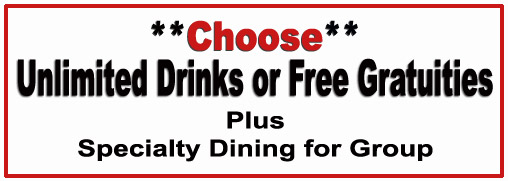
 Cruise Day 1:
Cruise Day 1:  One of Norway's most beautiful towns, renowned for its Jugend-style architecture and art nouveau style. Cruise visitors will immediately notice Alesund's unique layout, as it is built on islands extending to the sea, and offers scenic views of fjords and the Sunnmore Alps. Alesund is the fishing capital of Norway. Explore more of Alesund on a European cruise!
One of Norway's most beautiful towns, renowned for its Jugend-style architecture and art nouveau style. Cruise visitors will immediately notice Alesund's unique layout, as it is built on islands extending to the sea, and offers scenic views of fjords and the Sunnmore Alps. Alesund is the fishing capital of Norway. Explore more of Alesund on a European cruise! Keiser Wilhelmsgate and pass market square and the prison. Next is Borgundveien, Ålesunds longest street and the previous main road to the city centre. Pass Volsdalen church and the "Color Line" Stadium. Now starts our climb up towards Fjellstua where we take a break to admire the spectacular mountain and sea views. On our way down we pass many historical sites and the city park before we drive past the oldest breakwater in Norway and the lighthouse from 1858. Then we cross Hellebroa which connects the two central islands Nørvøya and Aspøya together. On our way back to the cruiseterminal we'll pass lots of beautiful Jugend style houses.
Keiser Wilhelmsgate and pass market square and the prison. Next is Borgundveien, Ålesunds longest street and the previous main road to the city centre. Pass Volsdalen church and the "Color Line" Stadium. Now starts our climb up towards Fjellstua where we take a break to admire the spectacular mountain and sea views. On our way down we pass many historical sites and the city park before we drive past the oldest breakwater in Norway and the lighthouse from 1858. Then we cross Hellebroa which connects the two central islands Nørvøya and Aspøya together. On our way back to the cruiseterminal we'll pass lots of beautiful Jugend style houses.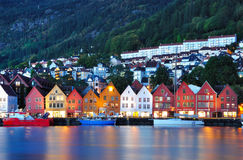 View this lovely and charming Norwegian city from your cruise ship and you'll see how the city is nestled between seven mountains, seven fjords and the North Sea. The Norwegian King resided here, and many historical events took place in this busy port. These events come alive when you amble down the old streets of Bryggen, past picturesque, wooden buildings and the Romanesque-style St. Mary's church.
View this lovely and charming Norwegian city from your cruise ship and you'll see how the city is nestled between seven mountains, seven fjords and the North Sea. The Norwegian King resided here, and many historical events took place in this busy port. These events come alive when you amble down the old streets of Bryggen, past picturesque, wooden buildings and the Romanesque-style St. Mary's church. The Bergen Wharf was one of the offices of the Hanseatic League (an alliance of trading guilds established to maintain a trade monopoly). We stroll through the wooden tenements and delve into bygone days and the history of the Wharf and the stories of those who lived and worked there. The narrow alleyways will make you feel like we stepped back in time to the era when the Hanseatic merchants dominated Bergen's trade. Visit the Hanseatic Museum, one of the oldest wooden buildings in Bergen, furnished in 18th century style and shows the life of the Hanseatic merchants. From the Wharf it's a short walk to the Bergenhus Fortress, with the royal stone hall and the Rosenkrantz tower.
The Bergen Wharf was one of the offices of the Hanseatic League (an alliance of trading guilds established to maintain a trade monopoly). We stroll through the wooden tenements and delve into bygone days and the history of the Wharf and the stories of those who lived and worked there. The narrow alleyways will make you feel like we stepped back in time to the era when the Hanseatic merchants dominated Bergen's trade. Visit the Hanseatic Museum, one of the oldest wooden buildings in Bergen, furnished in 18th century style and shows the life of the Hanseatic merchants. From the Wharf it's a short walk to the Bergenhus Fortress, with the royal stone hall and the Rosenkrantz tower.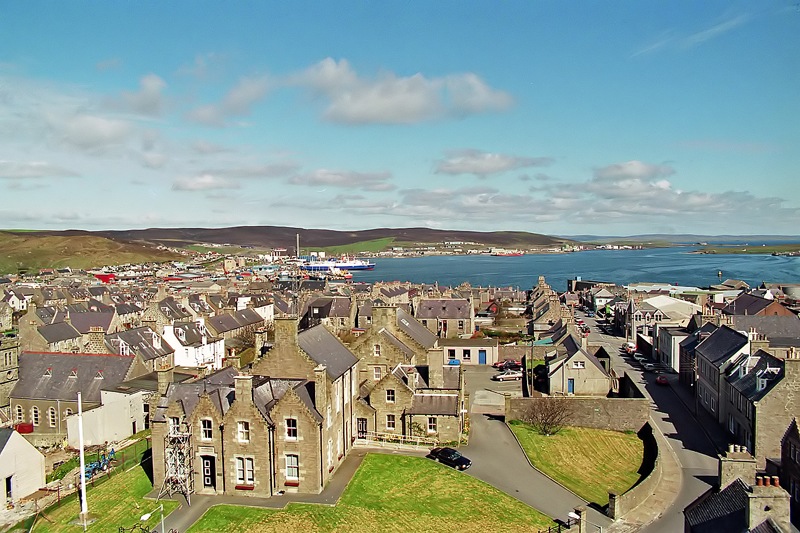 The capital of Scotland's Shetland Islands is a vibrant and energetic city colored by grand Victorian houses and the region's namesake ponies. It is a cruise ship's primary entry to the Shetlands, a mosaic of over a hundred islands inhabited by about 22,000 people and an abundance of wildlife. It is a land shaped by the sea featuring views of dramatic sculptured cliffs and tranquil sandy bays.
The capital of Scotland's Shetland Islands is a vibrant and energetic city colored by grand Victorian houses and the region's namesake ponies. It is a cruise ship's primary entry to the Shetlands, a mosaic of over a hundred islands inhabited by about 22,000 people and an abundance of wildlife. It is a land shaped by the sea featuring views of dramatic sculptured cliffs and tranquil sandy bays.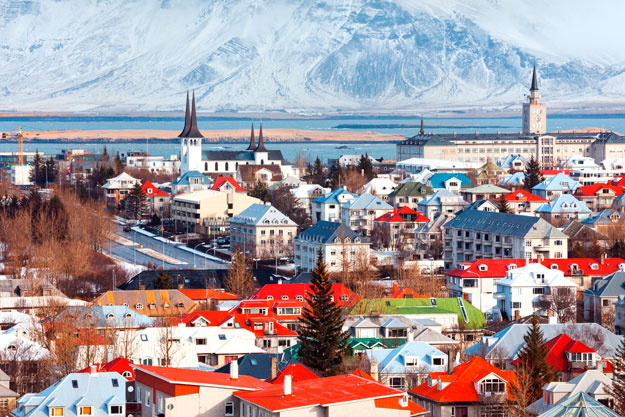 Cruise Day Day 7: Reykjavik, Iceland (Saturday:July 7, 2018 / 8:00am - )
Cruise Day Day 7: Reykjavik, Iceland (Saturday:July 7, 2018 / 8:00am - )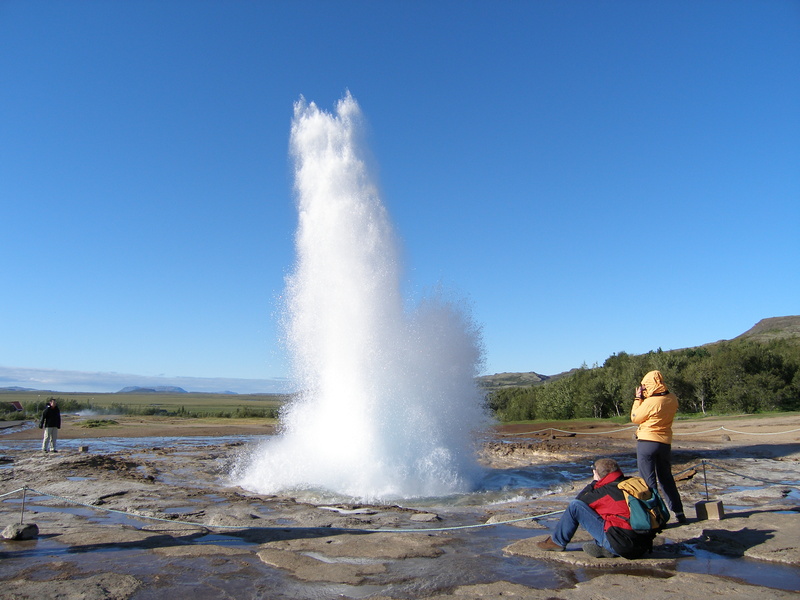 natural wonders for which Iceland is justly renowned, such as
natural wonders for which Iceland is justly renowned, such as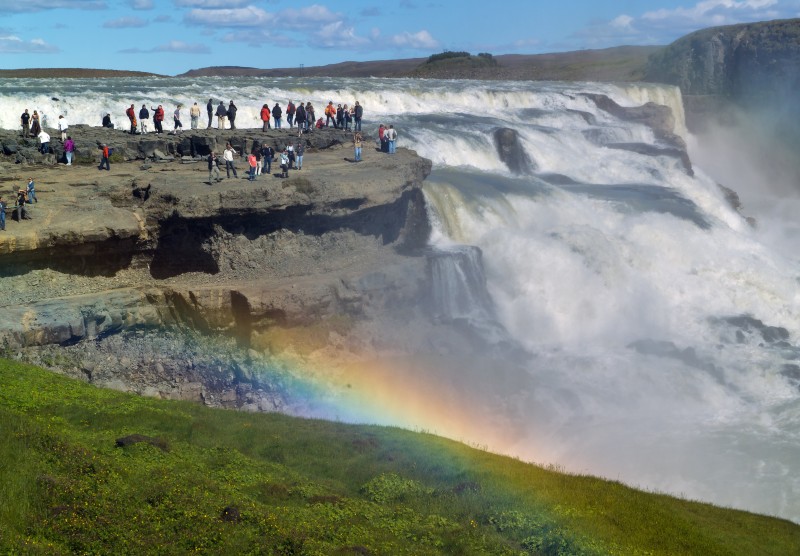 One of the Golden Circles many highlights is the Gullfoss waterfall, the queen of Iceland's waterfalls. We will walk around the Falls, where the river Hvitá tumbles 105 ft in a double cascade. When the sun is shining, we're likely to see a rainbow through the massive spray that forms.
One of the Golden Circles many highlights is the Gullfoss waterfall, the queen of Iceland's waterfalls. We will walk around the Falls, where the river Hvitá tumbles 105 ft in a double cascade. When the sun is shining, we're likely to see a rainbow through the massive spray that forms. of the world's most northern capital and surrounding towns. This is a detailed and comprehensive introduction to Reykjavik's past and present. During our guided tour Reykjavik's main attractions are highlighted on foot and by bus. The main landmarks, such as The Pearl, Hallgrímskirkja church, the National Museum of Iceland, the harbor and the famous 101 Reykjavik neighborhood are visited. We will drive through narrow streets with old timer houses, pass the university campus, the Nordic house, the Lutheran and Catholic cathedrals, the Parliament, the City Hall and Höfði house, where the Reagan/Gorbachev summit meeting took place in 1986.
of the world's most northern capital and surrounding towns. This is a detailed and comprehensive introduction to Reykjavik's past and present. During our guided tour Reykjavik's main attractions are highlighted on foot and by bus. The main landmarks, such as The Pearl, Hallgrímskirkja church, the National Museum of Iceland, the harbor and the famous 101 Reykjavik neighborhood are visited. We will drive through narrow streets with old timer houses, pass the university campus, the Nordic house, the Lutheran and Catholic cathedrals, the Parliament, the City Hall and Höfði house, where the Reagan/Gorbachev summit meeting took place in 1986. Cruise Day 9: Akureyri, Iceland (Monday, July 9, 2018 / 10:00am - 7:00pm)
Cruise Day 9: Akureyri, Iceland (Monday, July 9, 2018 / 10:00am - 7:00pm)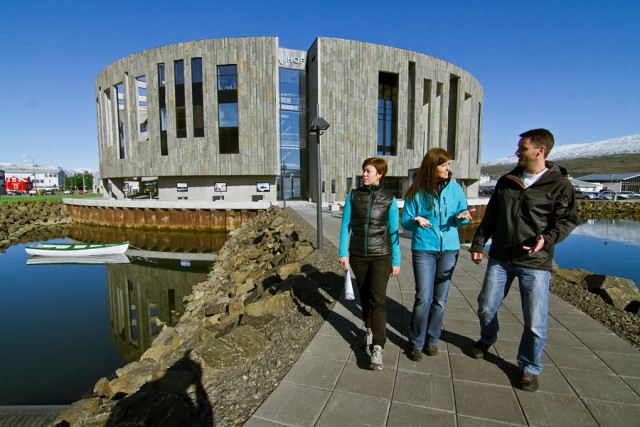 take a pleasant walk into the town along the Strandgata, enjoying the views of the harbor, town and fjord. Once in town we stroll up the colorful Artist’s Alley to the Akureyri church, one of the town’s proud symbols and consecrated in 1940. The church houses many artefacts including part of a strained glass window, stems from Coventry Cathedral in England. Following our church, we continue exploring the old mid town area. Akureyri’s past life as a trading post for Danish merchants is apparent throughout the walk – easily recognizable in the old town houses’ distinctive architecture. Visit the Museum of Akureyri to absorb more of the locality’s profoundly interesting past.
take a pleasant walk into the town along the Strandgata, enjoying the views of the harbor, town and fjord. Once in town we stroll up the colorful Artist’s Alley to the Akureyri church, one of the town’s proud symbols and consecrated in 1940. The church houses many artefacts including part of a strained glass window, stems from Coventry Cathedral in England. Following our church, we continue exploring the old mid town area. Akureyri’s past life as a trading post for Danish merchants is apparent throughout the walk – easily recognizable in the old town houses’ distinctive architecture. Visit the Museum of Akureyri to absorb more of the locality’s profoundly interesting past. This starkly beautiful island holds many ancient treasures like the mysterious Standing Stones of Stenness and the 5,000-year-old village of Skara Brae, which was discovered with the furniture and indoor drains preserved. Make sure to visit the striking trio of St. Magnus Cathedral, the nearby ruins of the Earl’s Palace and Bishop’s Palace. After touring, stop in a pub to chow down on salmon and lamb dishes with the locals. And ask them about the wide range of Kirkwall’s specialty items, which includes cashmere, whiskey and crafts.
This starkly beautiful island holds many ancient treasures like the mysterious Standing Stones of Stenness and the 5,000-year-old village of Skara Brae, which was discovered with the furniture and indoor drains preserved. Make sure to visit the striking trio of St. Magnus Cathedral, the nearby ruins of the Earl’s Palace and Bishop’s Palace. After touring, stop in a pub to chow down on salmon and lamb dishes with the locals. And ask them about the wide range of Kirkwall’s specialty items, which includes cashmere, whiskey and crafts. Inverness is a city in the glorious Scottish Highlands . Teeming with bagpipe players and enthusiasts thanks to the city's annual Northern Meeting in September, Inverness also boasts a diverse music scene. Gaelic was the native language until the turn of the 19th century.
Inverness is a city in the glorious Scottish Highlands . Teeming with bagpipe players and enthusiasts thanks to the city's annual Northern Meeting in September, Inverness also boasts a diverse music scene. Gaelic was the native language until the turn of the 19th century.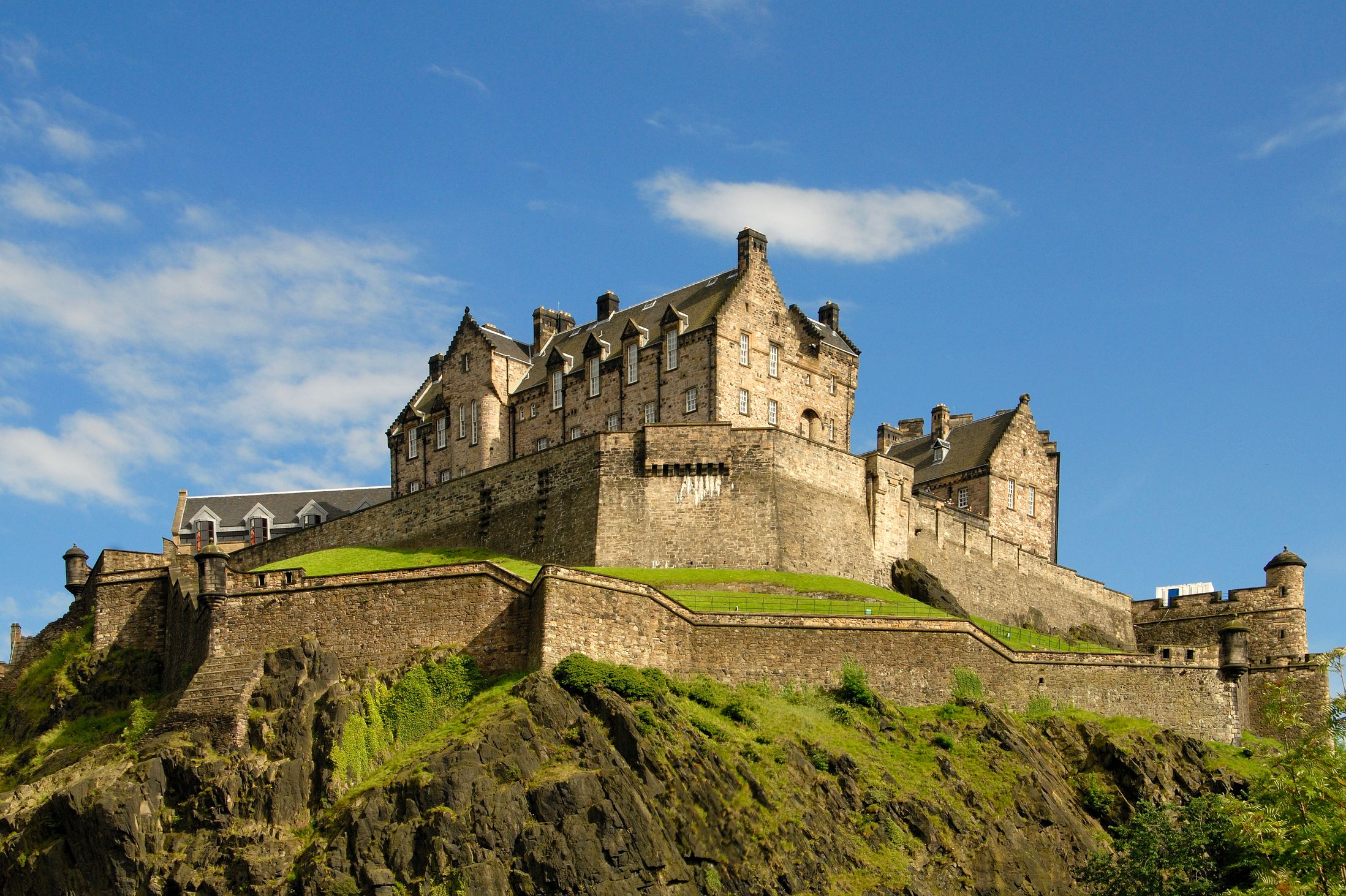 Make sure you pack your walking shoes for Edinburgh. Stroll along the medieval Royal Mile to the Palace of Holyroodhouse to see the abbey and Queen Mary’s chambers. Savor the old town’s marvelous Georgian and Victorian architecture. Marvel at the impressive Edinburgh Castle, high on its volcanic crag with a fabulous view. Visit St. Giles’ Cathedral where John Knox once preached. Leave enough time to rest your legs at one of Edinburgh’s seaside restaurants to enjoy fresh salmon, scallops, lamb and prime Angus beef.
Make sure you pack your walking shoes for Edinburgh. Stroll along the medieval Royal Mile to the Palace of Holyroodhouse to see the abbey and Queen Mary’s chambers. Savor the old town’s marvelous Georgian and Victorian architecture. Marvel at the impressive Edinburgh Castle, high on its volcanic crag with a fabulous view. Visit St. Giles’ Cathedral where John Knox once preached. Leave enough time to rest your legs at one of Edinburgh’s seaside restaurants to enjoy fresh salmon, scallops, lamb and prime Angus beef.


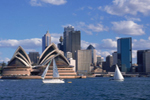
 Board our morning cruise of Sydney's harbor past the Opera House, Harbour Bridge and Fort Denison. Then we will cruise past palatial waterfront homes, parks, beaches and marinas that reveal Sydney's relaxed lifestyle. Go behind the scenes at the World Heritage listed Sydney Opera House. See what goes on behind the world's most recognizable sails. Hear the controversial story of the building's construction, as dramatic as any opera plot, brought alive by the new interactive audio-visual presentation.
Board our morning cruise of Sydney's harbor past the Opera House, Harbour Bridge and Fort Denison. Then we will cruise past palatial waterfront homes, parks, beaches and marinas that reveal Sydney's relaxed lifestyle. Go behind the scenes at the World Heritage listed Sydney Opera House. See what goes on behind the world's most recognizable sails. Hear the controversial story of the building's construction, as dramatic as any opera plot, brought alive by the new interactive audio-visual presentation. Vacation Day 3 - Blue Mountains - Featherdale Wildlife Park - Scenic World
Vacation Day 3 - Blue Mountains - Featherdale Wildlife Park - Scenic World Take the Climb of Your Life with BridgeClimb Sydney! The Bridge Climb is an optional 3 ½ hour guided journey to the top of the Sydney Harbour Bridge. It will takes us along the outer arch of the Bridge on catwalks and ladders all the way to the summit, 440 feet above Sydney Harbour. When we reach the top you will have a sense of achievement that you will remember forever - you've conquered an Australian icon recognized the world over!
Take the Climb of Your Life with BridgeClimb Sydney! The Bridge Climb is an optional 3 ½ hour guided journey to the top of the Sydney Harbour Bridge. It will takes us along the outer arch of the Bridge on catwalks and ladders all the way to the summit, 440 feet above Sydney Harbour. When we reach the top you will have a sense of achievement that you will remember forever - you've conquered an Australian icon recognized the world over!
 Green Island is a beautiful coral cay on Australia’s Great Barrier Reef with unique rainforests, surrounded by white sandy beaches & magnificent coral reefs and abundant marine life. Snorkel, dive and swim in the warm island waters, view the spectacular reef from the coral viewing tours, explore Green Island National Park or just relax on the sandy beach.
Green Island is a beautiful coral cay on Australia’s Great Barrier Reef with unique rainforests, surrounded by white sandy beaches & magnificent coral reefs and abundant marine life. Snorkel, dive and swim in the warm island waters, view the spectacular reef from the coral viewing tours, explore Green Island National Park or just relax on the sandy beach.  Vacation Day 8: Cairns to Melbourne
Vacation Day 8: Cairns to Melbourne
 A visit to Melbourne would not be complete without a visit to the Queen Victoria Market. The market has been the heart and soul of Melbourne for more than a century. A historic landmark spread over two city blocks, this vibrant and bustling inner-city Market is where
A visit to Melbourne would not be complete without a visit to the Queen Victoria Market. The market has been the heart and soul of Melbourne for more than a century. A historic landmark spread over two city blocks, this vibrant and bustling inner-city Market is where 

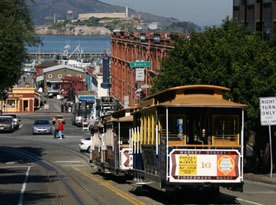
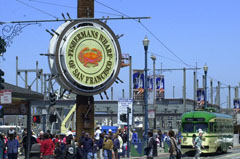 In its early days, San Francisco was the West Coast hub of fishing and shipping. When the city was growing up, hundreds of fishermen would gather at Fisherman’s Wharf in the morning, earn their day’s catch, and meet back here in the evening. On our Fisherman’s Wharf walking tour, we will see Ghirardelli Square, home of the legendary chocolate maker, the world famous San Francisco cable car, and get a behind-the-scenes look into how Fisherman’s Wharf really operates. Also see The Balclutha, an 1800s-era clipper ship famous for appearing in the movie Mutiny on the Bounty.
In its early days, San Francisco was the West Coast hub of fishing and shipping. When the city was growing up, hundreds of fishermen would gather at Fisherman’s Wharf in the morning, earn their day’s catch, and meet back here in the evening. On our Fisherman’s Wharf walking tour, we will see Ghirardelli Square, home of the legendary chocolate maker, the world famous San Francisco cable car, and get a behind-the-scenes look into how Fisherman’s Wharf really operates. Also see The Balclutha, an 1800s-era clipper ship famous for appearing in the movie Mutiny on the Bounty.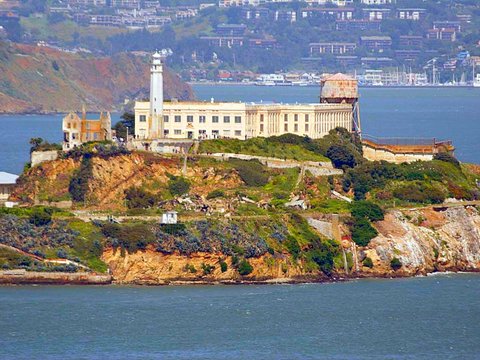 This afternoon we travel to Alcatraz, the former federal prison that once held notorious criminals Scarface Al Capone and George 'Machine Gun' Kelly, a national historic landmark and one of the most sought-out attractions in the Bay Area. Tour the remains of the maximum-security facility on small and windy Alcatraz Island, aptly nicknamed 'The Rock,'. Visit the grounds and cell-house; hear stories from former inmates; and pass by the Golden Gate Bridge, Bay Bridge, and Angel Island on our 1.25-mile ferry ride in and out. Once on the island, we can explore at our own pace, with the self-guided cell-house audio tour.
This afternoon we travel to Alcatraz, the former federal prison that once held notorious criminals Scarface Al Capone and George 'Machine Gun' Kelly, a national historic landmark and one of the most sought-out attractions in the Bay Area. Tour the remains of the maximum-security facility on small and windy Alcatraz Island, aptly nicknamed 'The Rock,'. Visit the grounds and cell-house; hear stories from former inmates; and pass by the Golden Gate Bridge, Bay Bridge, and Angel Island on our 1.25-mile ferry ride in and out. Once on the island, we can explore at our own pace, with the self-guided cell-house audio tour. This morning we travel through Golden Gate Park, checking out the ample green space, windmills at Ocean Beach, and the bison paddock. We stop at the Japanese Tea Garden to experience the natural beauty, tranquility and harmony of a Japanese-style garden. Then we drive down city streets lined with colorful Victorian and Queen Anne homes that San Francisco is known for. Hear from our guide about the area’s history, from the American Indians to Spanish settlers to the Gold Rush. Other sights we’ll see include the Palace of Fine Arts, the Presidio (a former Army post and now a national park site), Fisherman’s Wharf, and the neighborhoods of Chinatown and North Beach. Look out at Alcatraz Island, and stop at Twin Peaks (weather permitting) for a panoramic view that can’t be beat.
This morning we travel through Golden Gate Park, checking out the ample green space, windmills at Ocean Beach, and the bison paddock. We stop at the Japanese Tea Garden to experience the natural beauty, tranquility and harmony of a Japanese-style garden. Then we drive down city streets lined with colorful Victorian and Queen Anne homes that San Francisco is known for. Hear from our guide about the area’s history, from the American Indians to Spanish settlers to the Gold Rush. Other sights we’ll see include the Palace of Fine Arts, the Presidio (a former Army post and now a national park site), Fisherman’s Wharf, and the neighborhoods of Chinatown and North Beach. Look out at Alcatraz Island, and stop at Twin Peaks (weather permitting) for a panoramic view that can’t be beat. Our enthralling afternoon trip to Muir Woods, Giant Redwoods and Sausalito takes us across the Golden Gate Bridge to the Bay Area's most popular national monument and the prettiest village in California. After crossing the impressive Golden Gate Bridge, we'll stop for a view of San Francisco from Vista Point, before driving through the coastal mountains to Muir Woods. This national monument is the site of a virgin forest of California Coast redwood trees, among the oldest and tallest on earth. Take the opportunity to roam through an ancient forest of giant redwood trees on our 75-minute visit of Muir Woods. Our tour also takes us to Sausalito, a quaint Mediterranean-style seaside village. Stroll along the waterfront, shop or take photos in this picturesque artists' colony nestled on the northern shores of San Francisco Bay.
Our enthralling afternoon trip to Muir Woods, Giant Redwoods and Sausalito takes us across the Golden Gate Bridge to the Bay Area's most popular national monument and the prettiest village in California. After crossing the impressive Golden Gate Bridge, we'll stop for a view of San Francisco from Vista Point, before driving through the coastal mountains to Muir Woods. This national monument is the site of a virgin forest of California Coast redwood trees, among the oldest and tallest on earth. Take the opportunity to roam through an ancient forest of giant redwood trees on our 75-minute visit of Muir Woods. Our tour also takes us to Sausalito, a quaint Mediterranean-style seaside village. Stroll along the waterfront, shop or take photos in this picturesque artists' colony nestled on the northern shores of San Francisco Bay.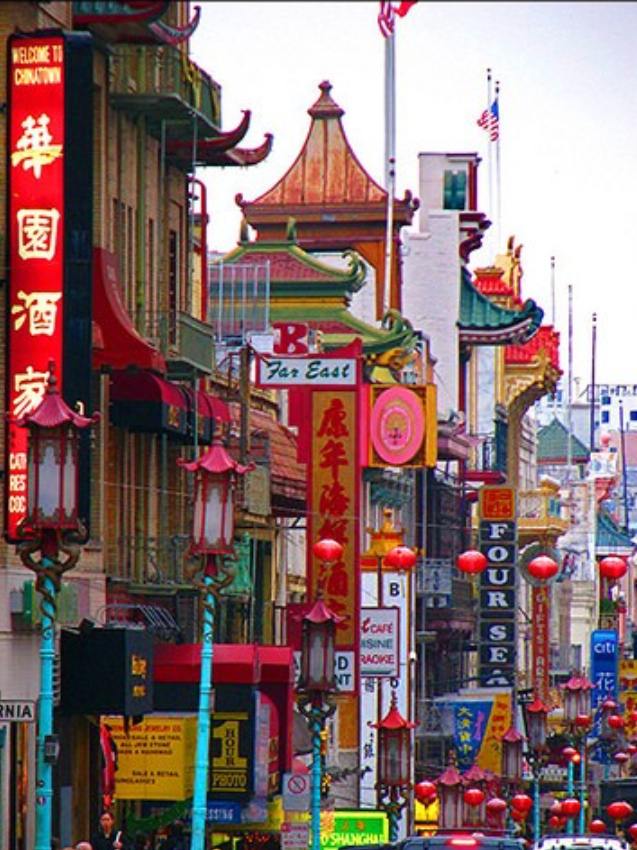 Love to shop, want to visit the wine country, explore the Science Center or take a trolley ride - then today is your day.
Love to shop, want to visit the wine country, explore the Science Center or take a trolley ride - then today is your day.